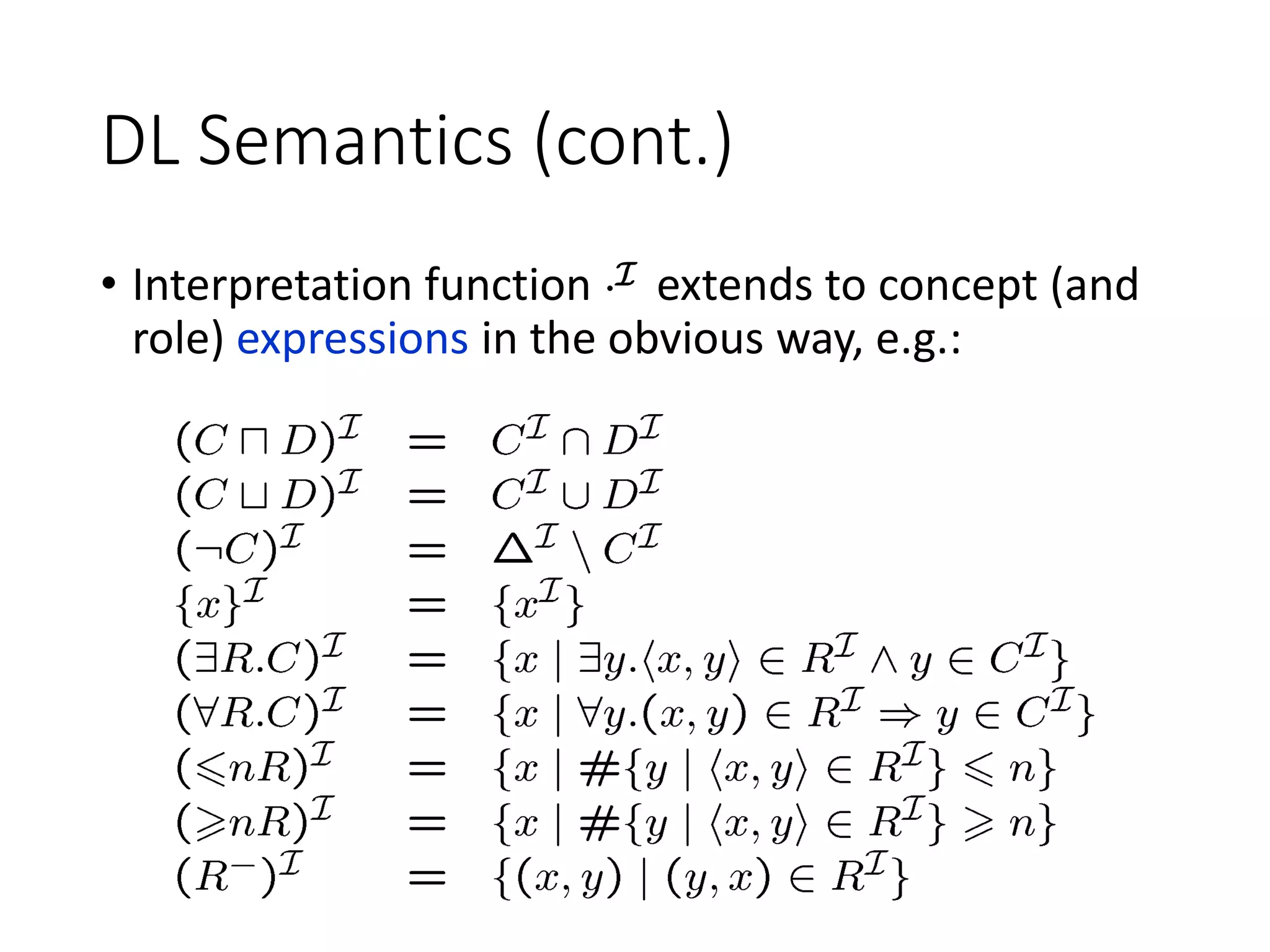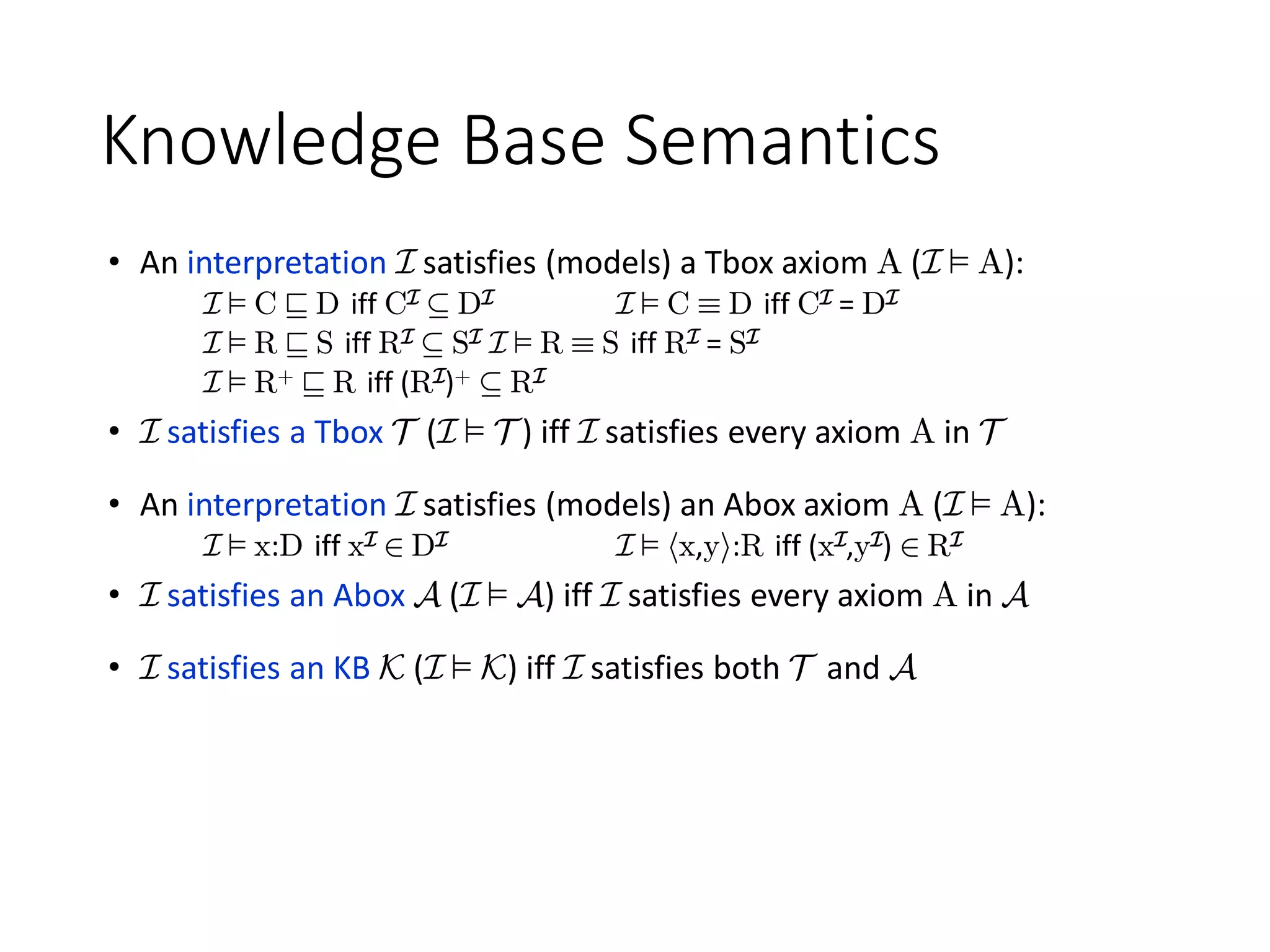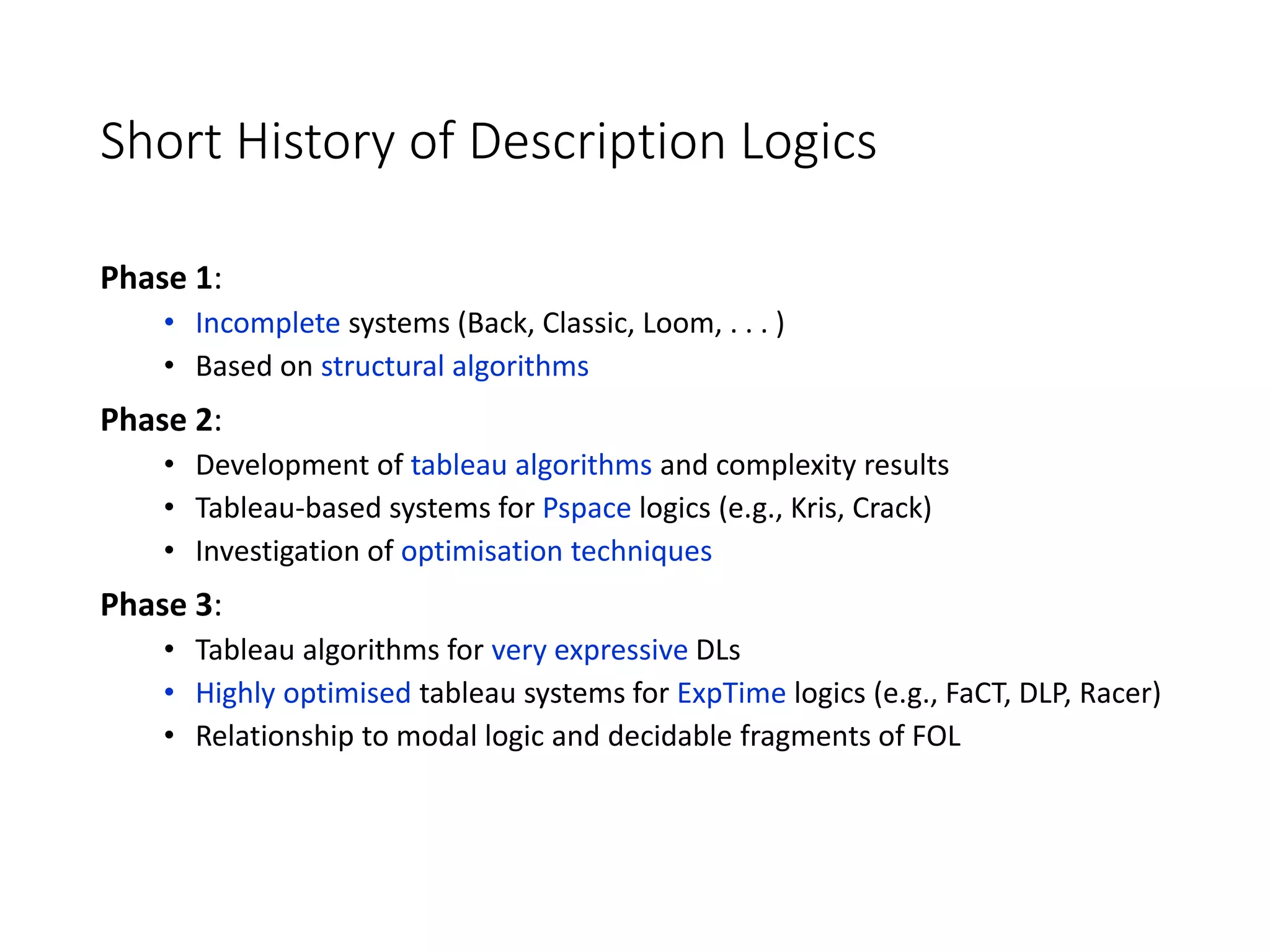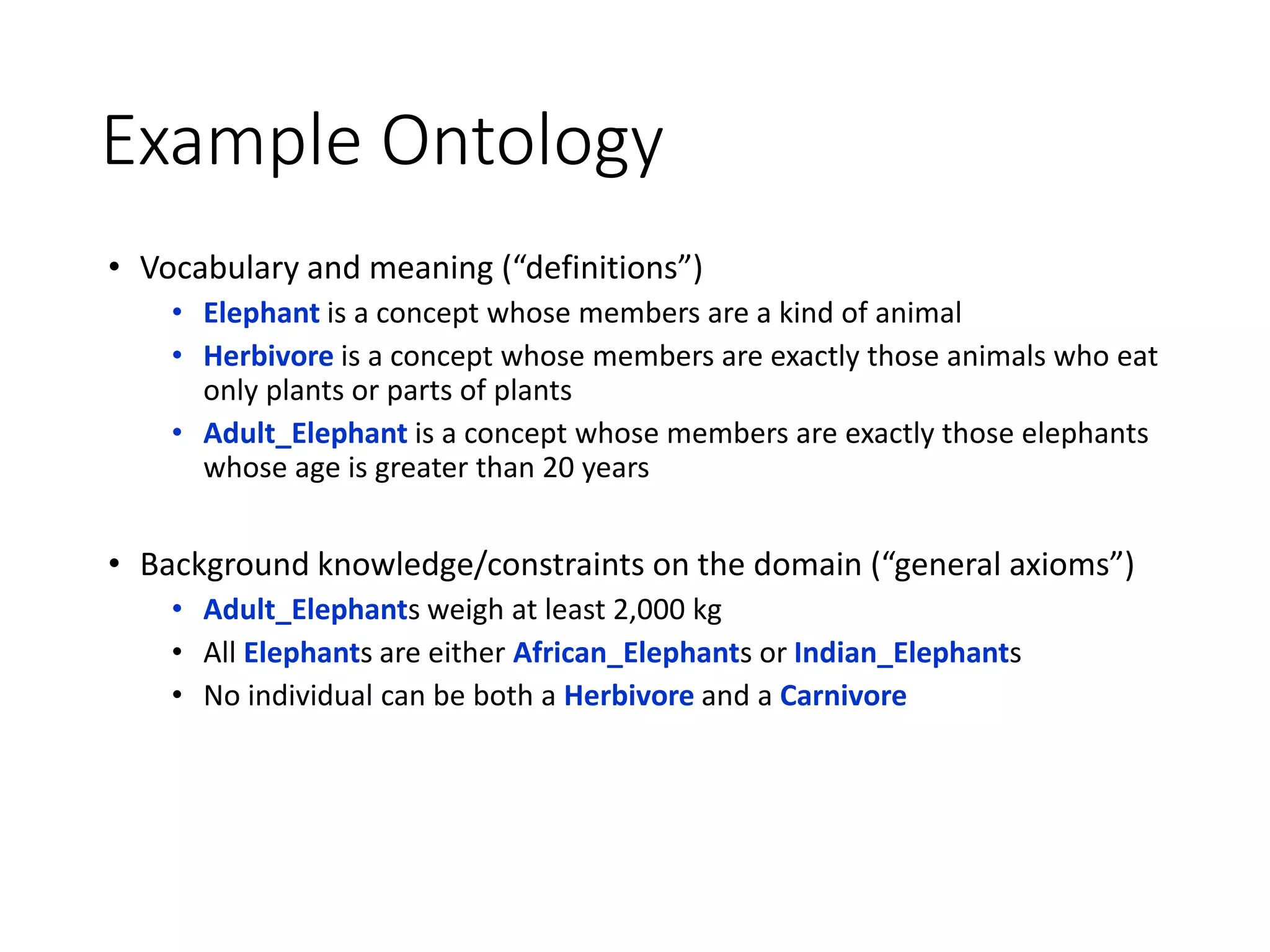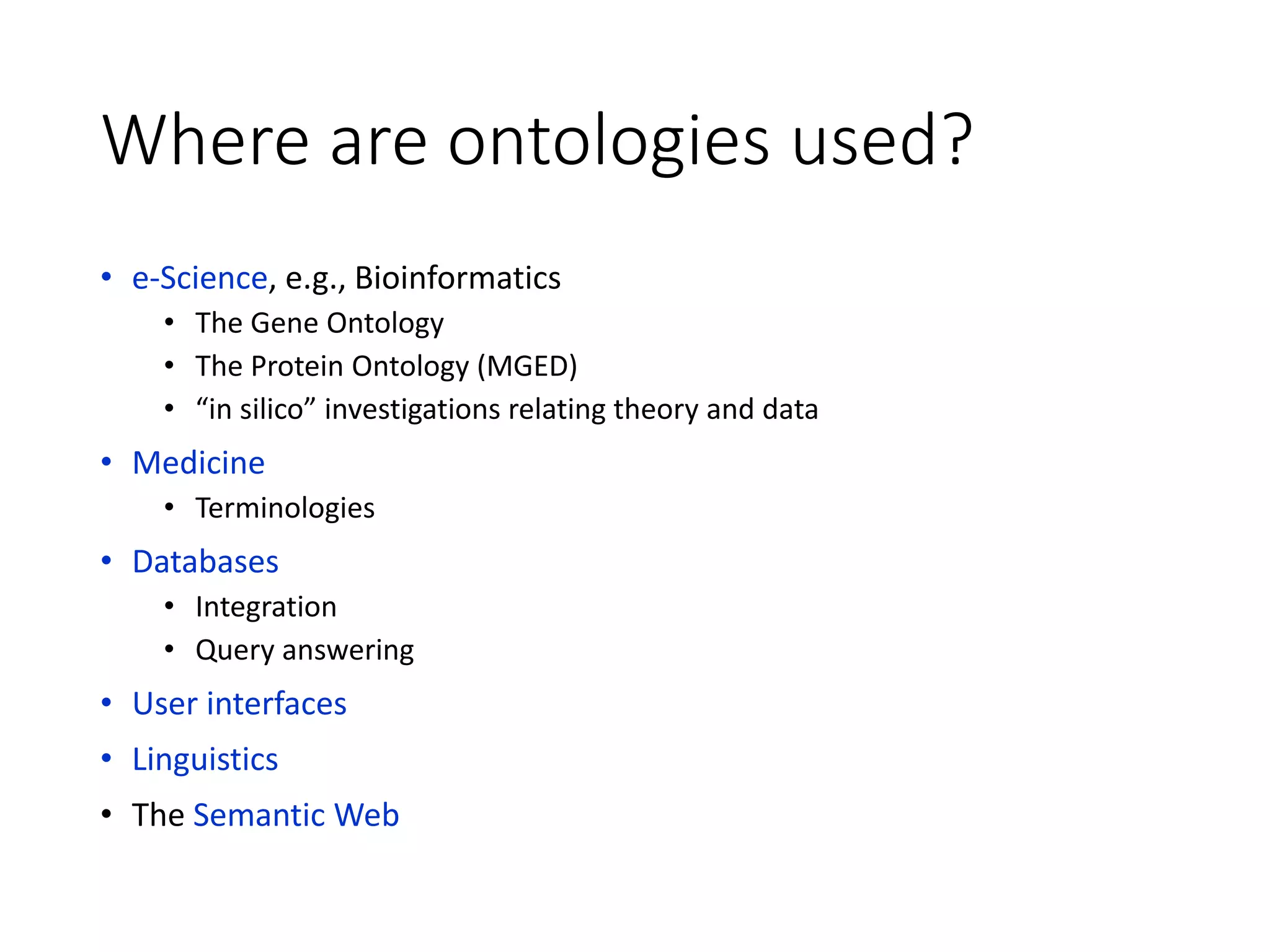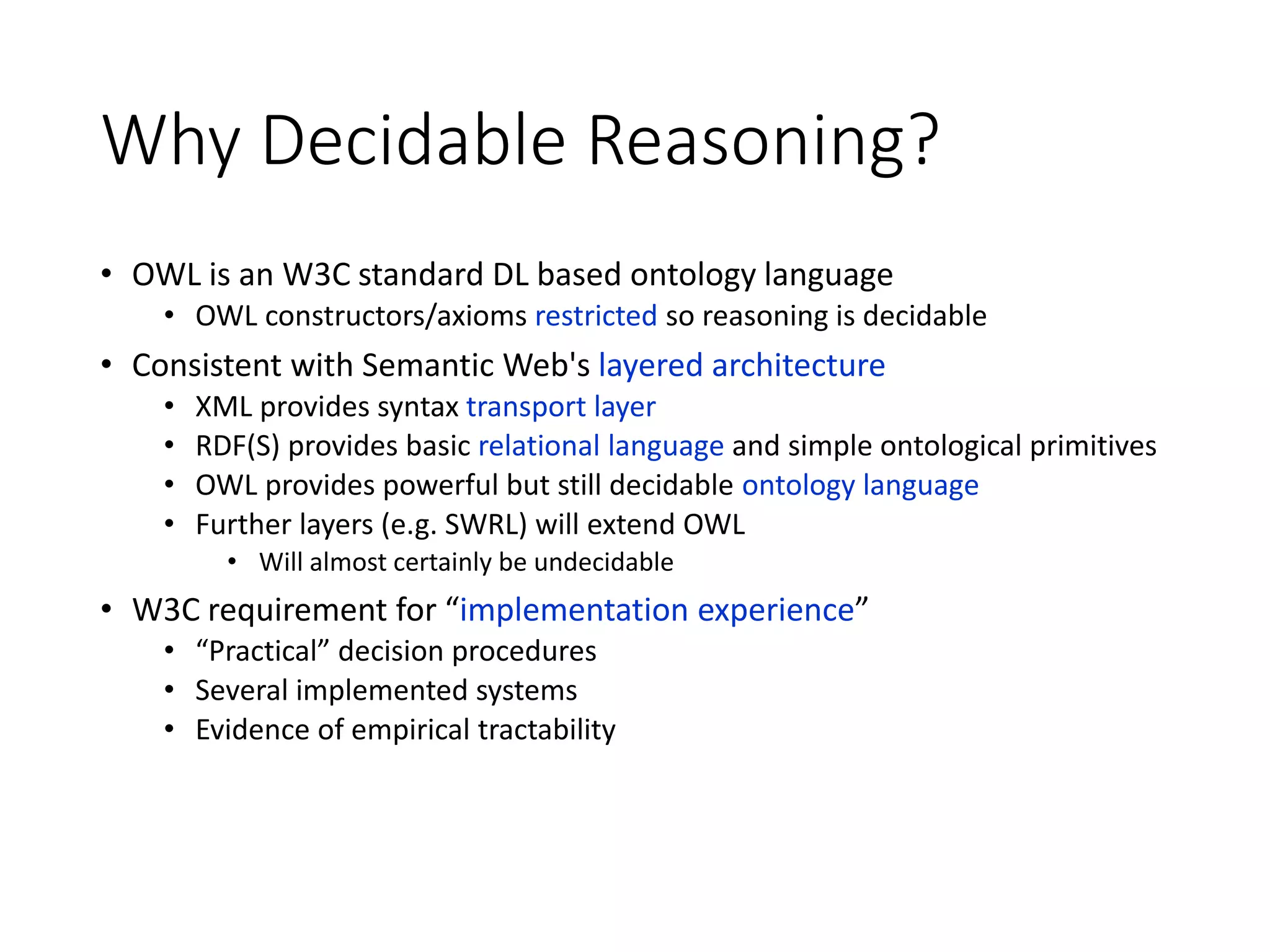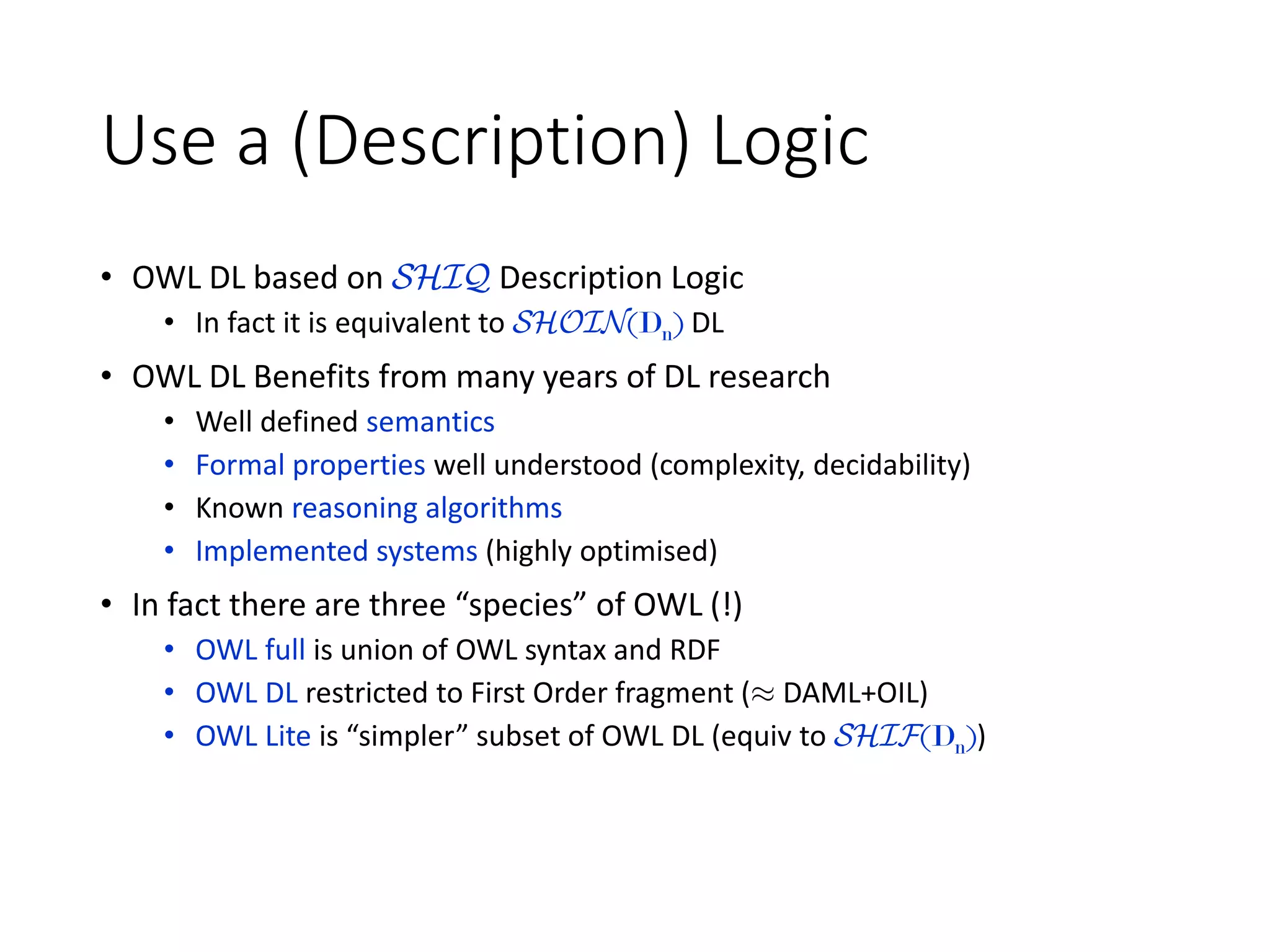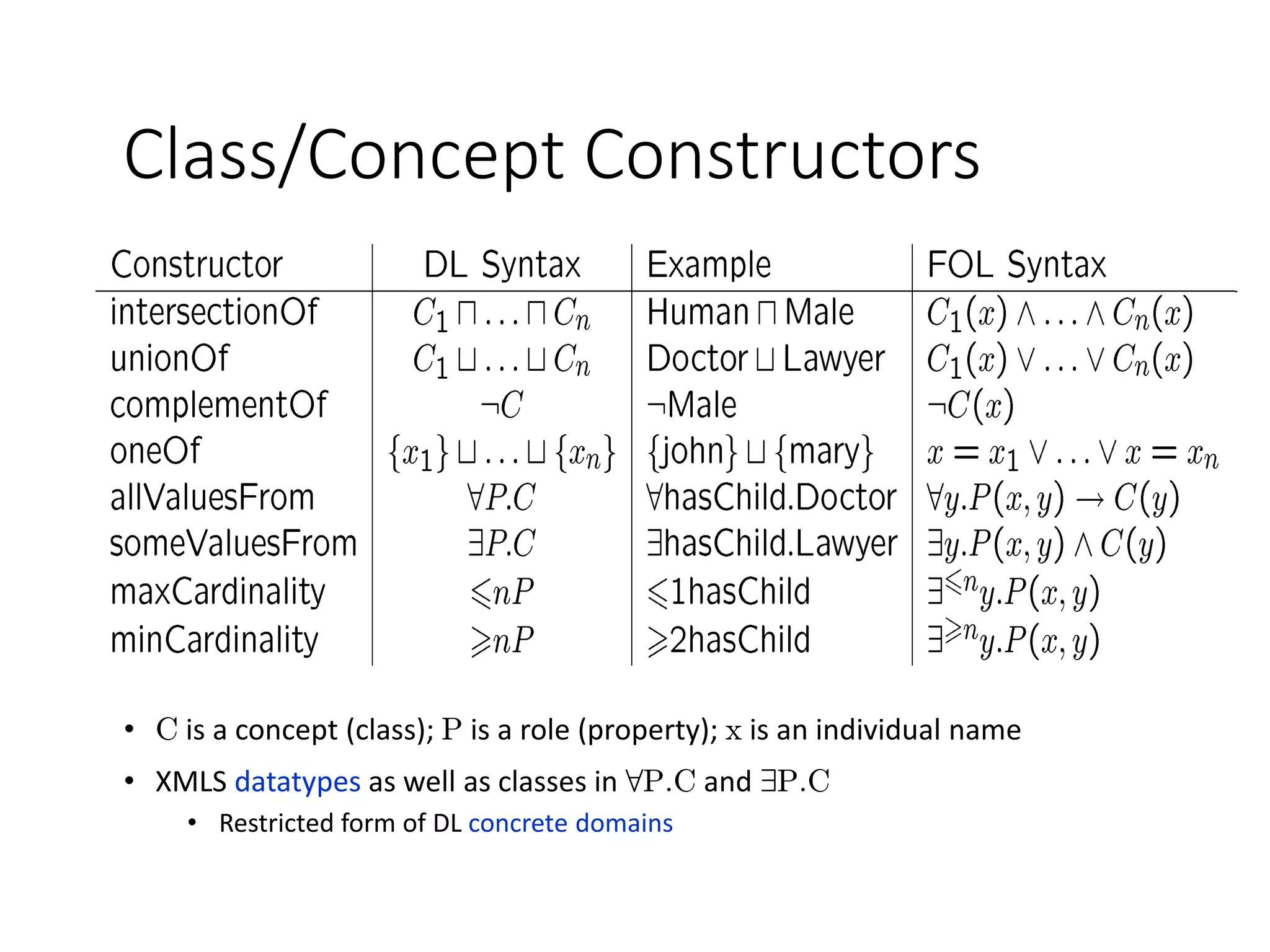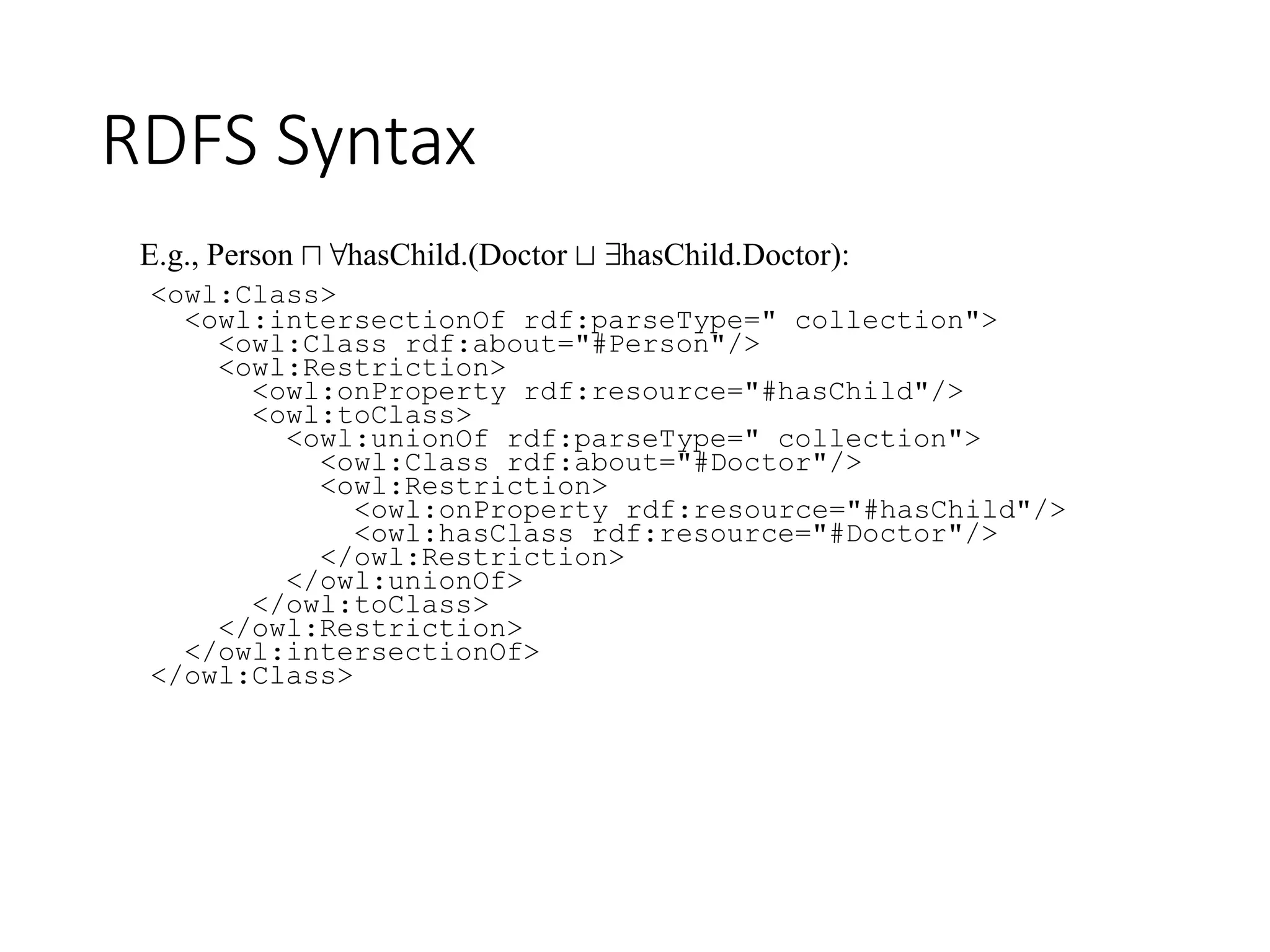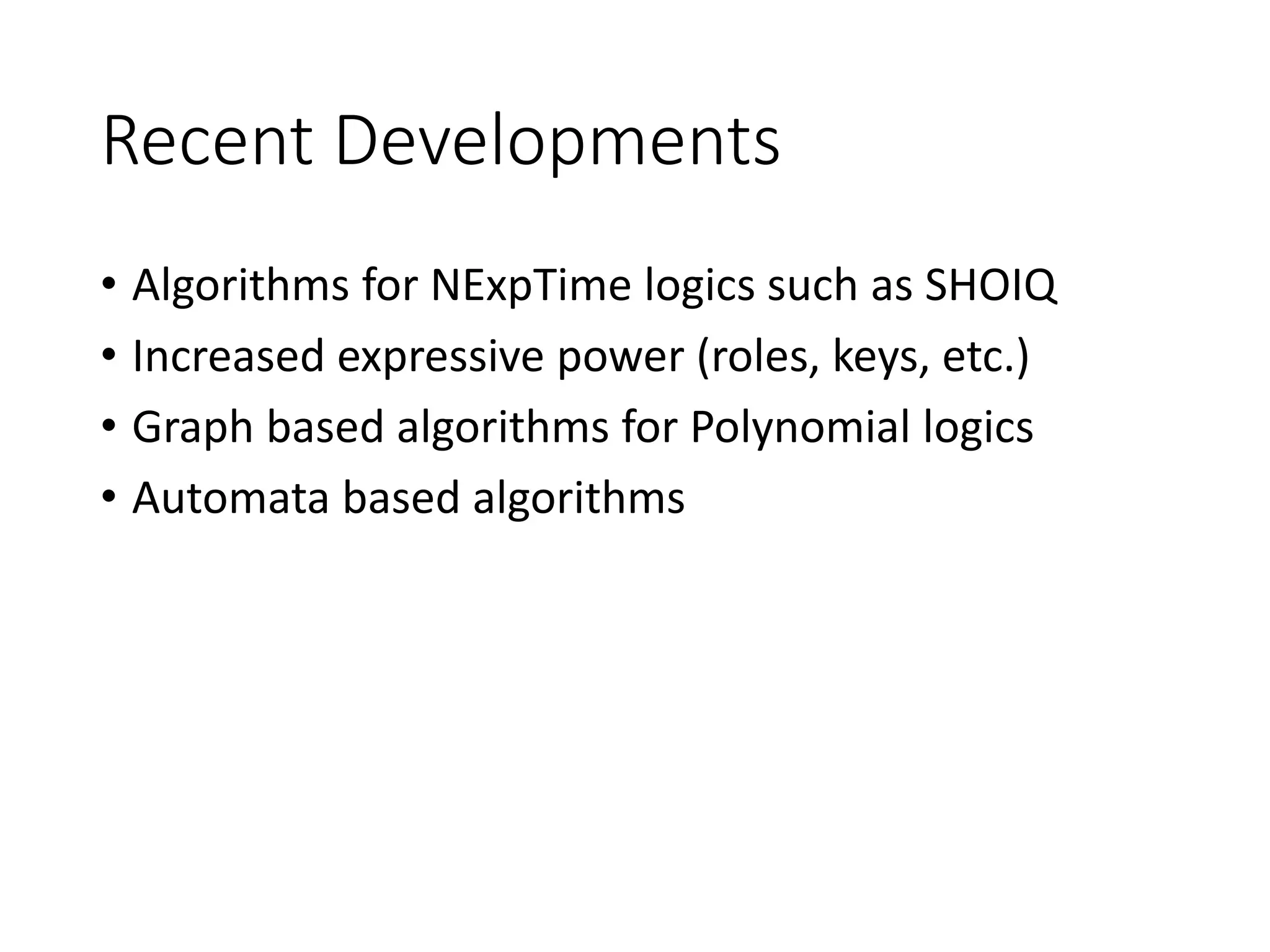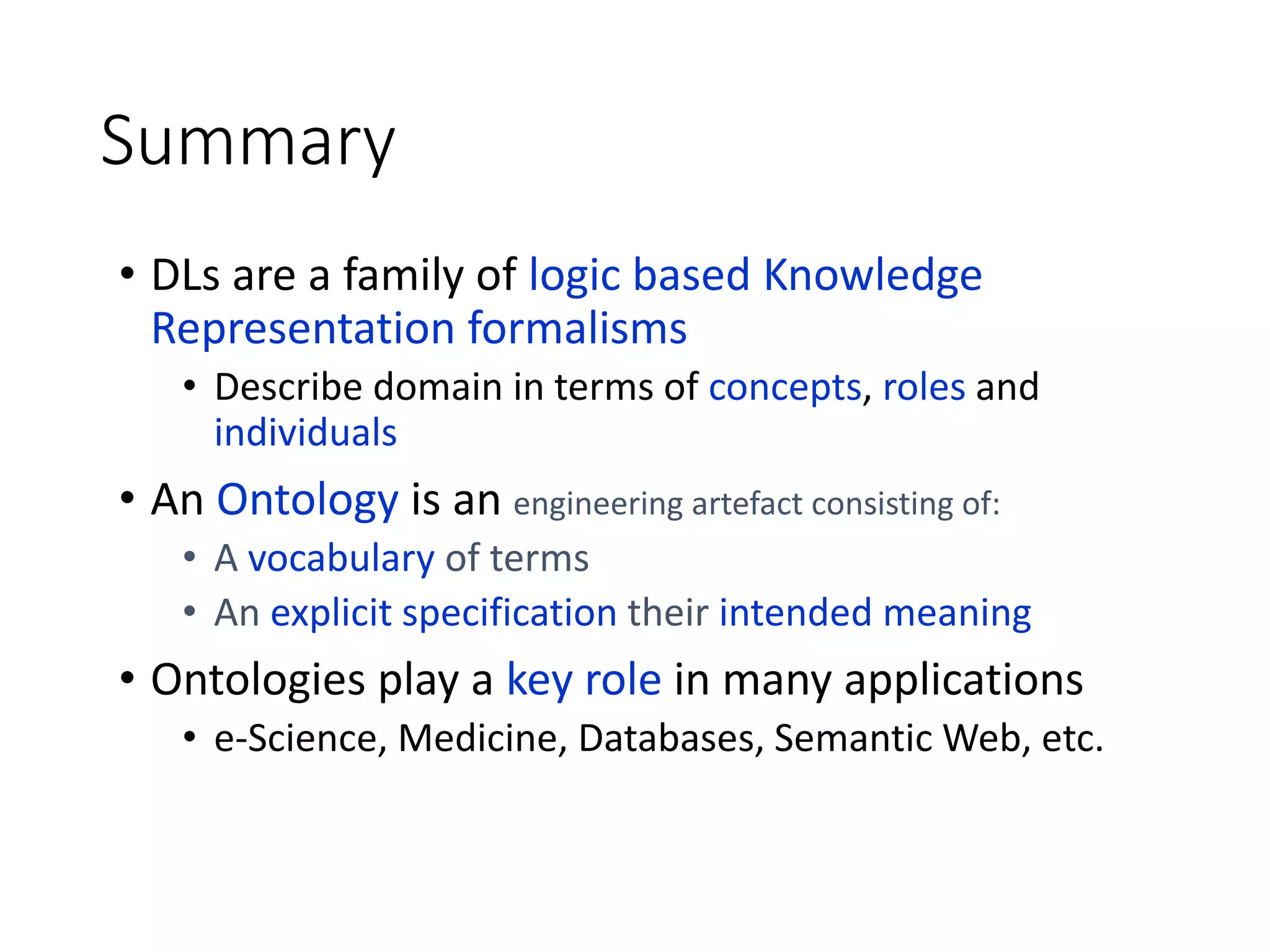This document provides an overview of description logics, which are a family of formal knowledge representation languages. Description logics are based on semantic networks and modal logic. They allow modeling a domain in terms of concepts, roles, and individuals. Description logics have a formal semantics, decidable reasoning problems, and highly optimized implemented systems. The document describes the basics of description logics, including concept and role constructors, knowledge base structure and semantics, the DL family of languages, and applications of description logic systems.


![DL Basics
• Concept names are equivalent to unary predicates
• In general, concepts equiv to formulae with one free
variable
• Role names are equivalent to binary predicates
• In general, roles equiv to formulae with two free variables
• Individual names are equivalent to constants
• Operators restricted so that:
• Language is decidable and, if possible, of low complexity
• No need for explicit use of variables
• Restricted form of 9 and 8 (direct correspondence with ◊ and [])
• Features such as counting can be succinctly expressed](https://image.slidesharecdn.com/bt02-230606121356-e39488da/75/BT02-pptx-3-2048.jpg)



